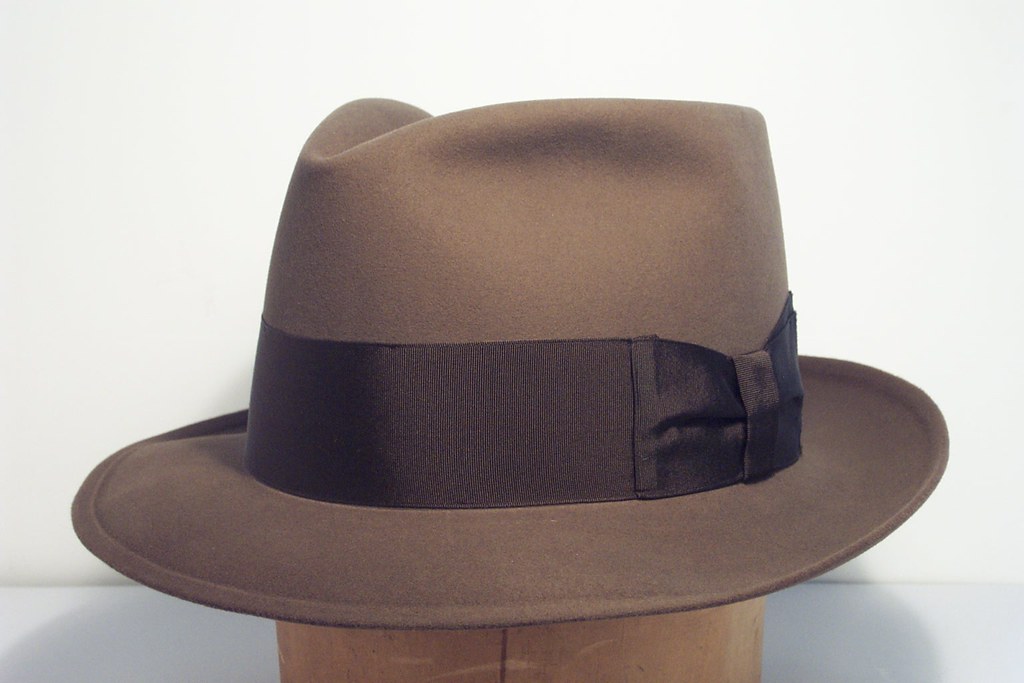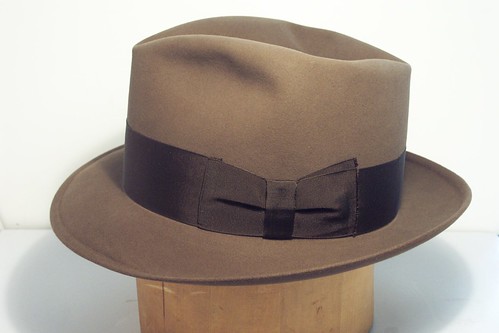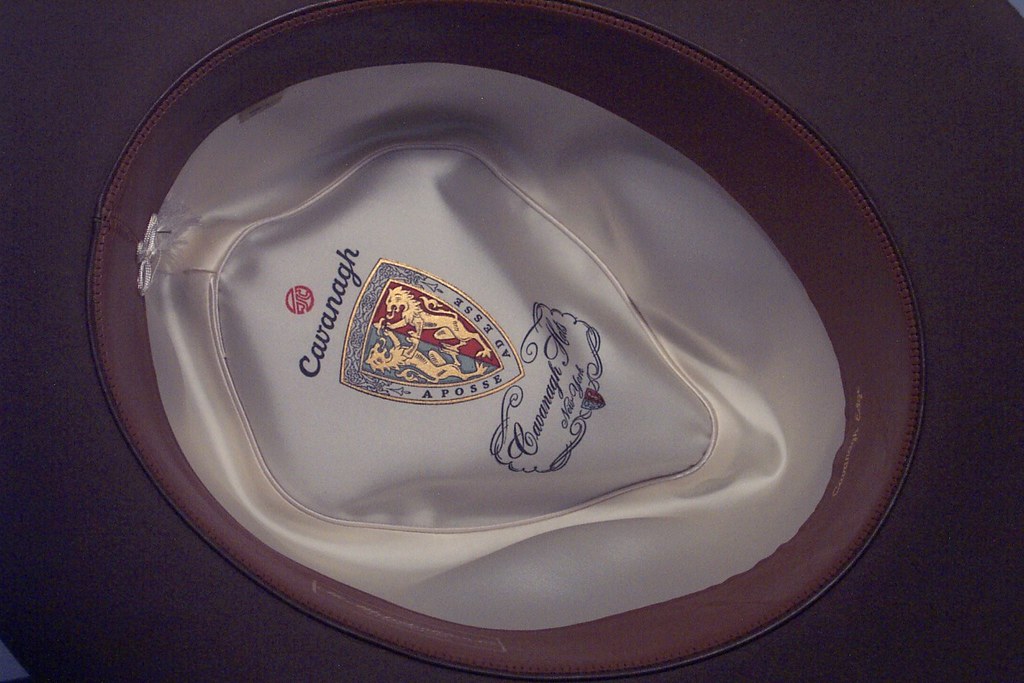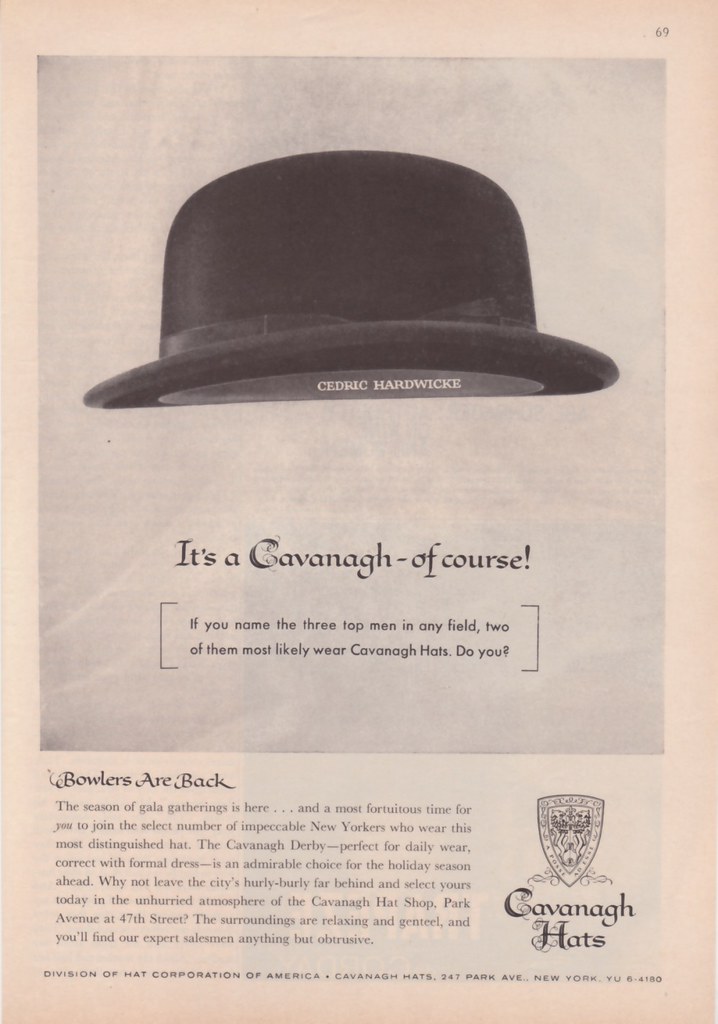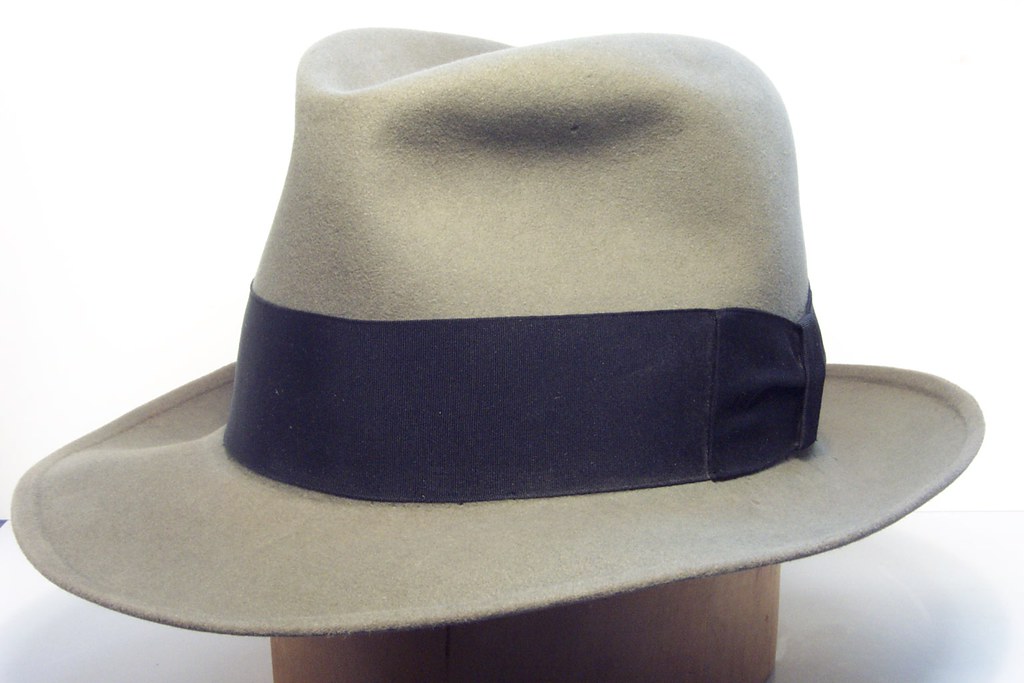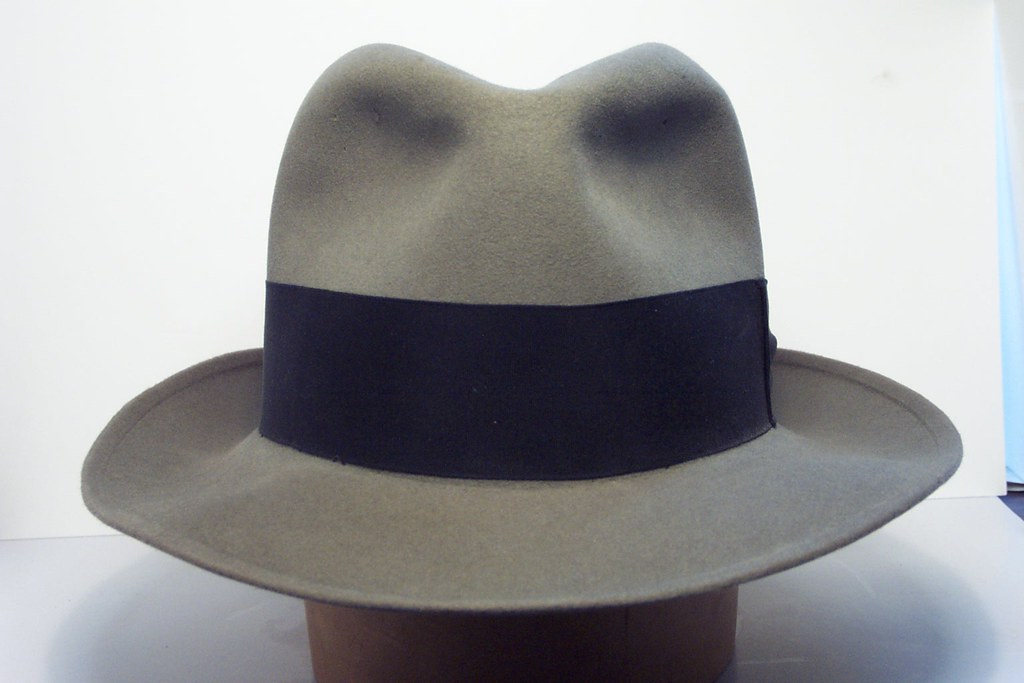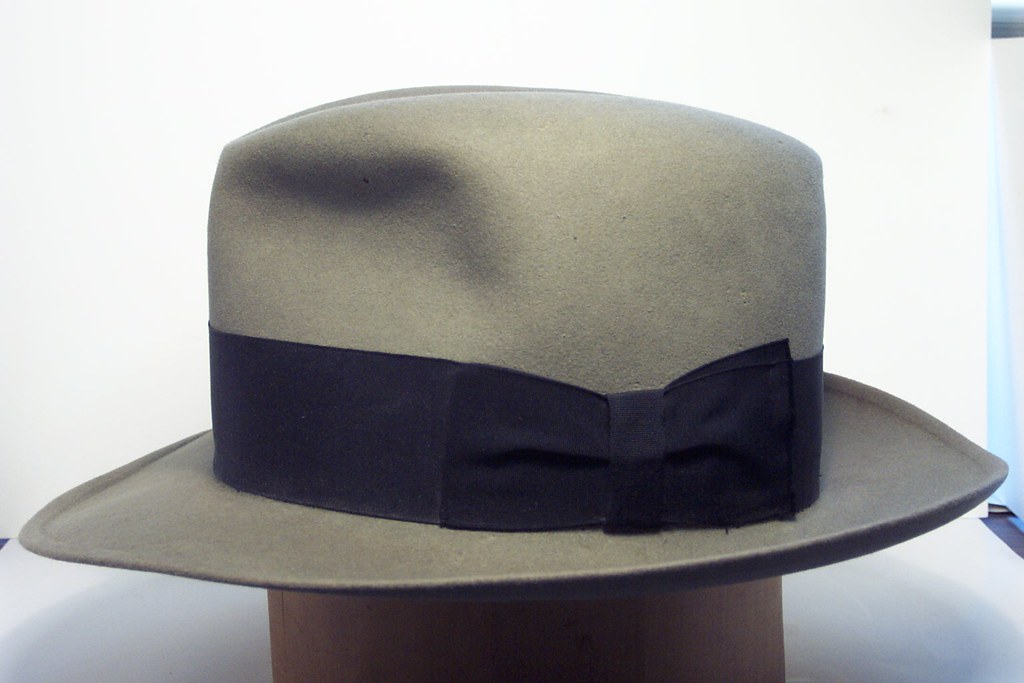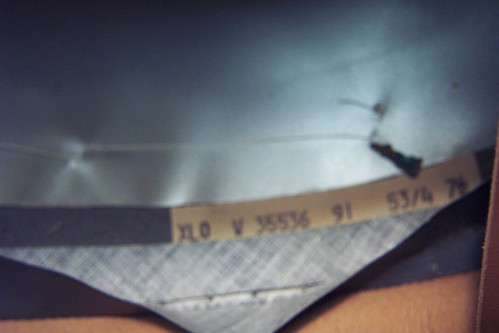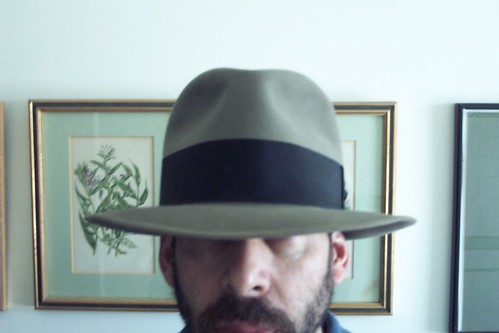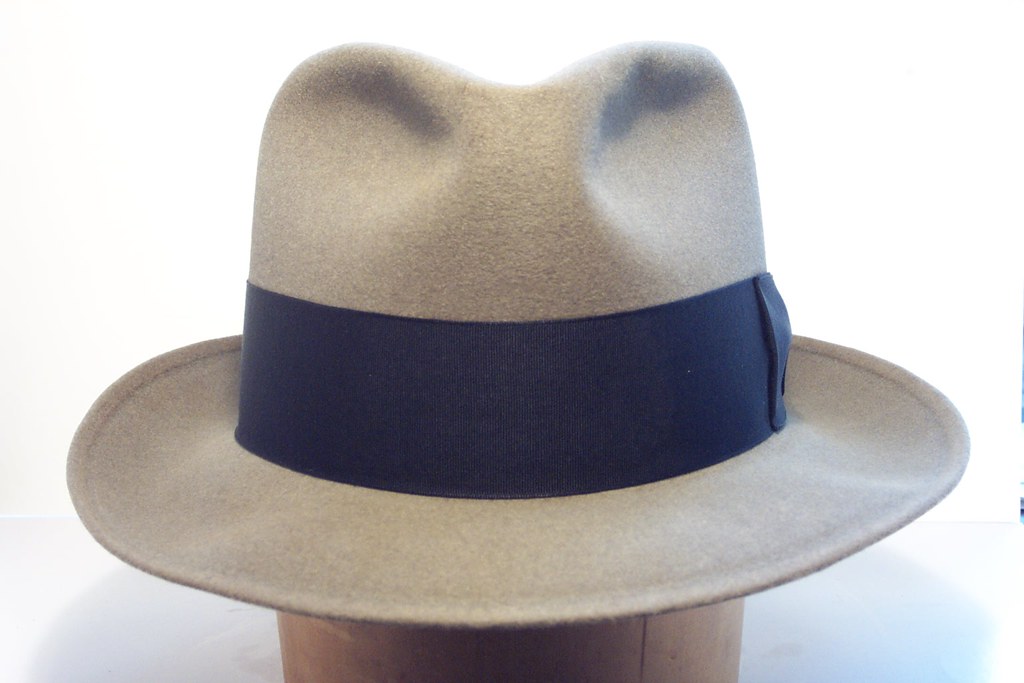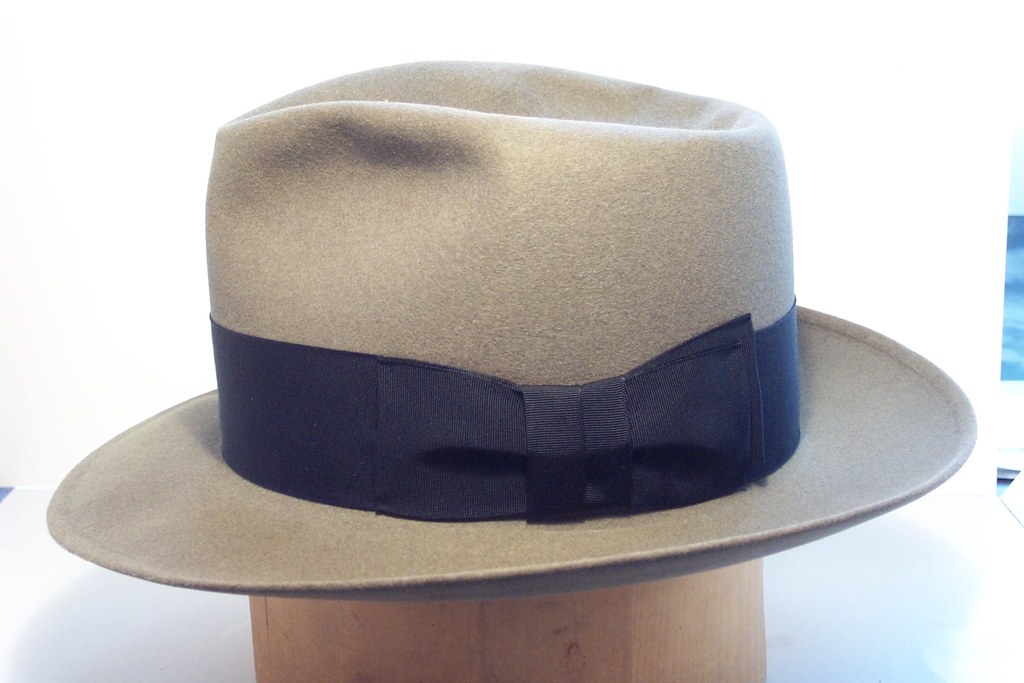Brad Bowers
I'll Lock Up
- Messages
- 4,187
I dug back through my research to find an article on the '59 derby revival, and a couple of things jumped out at me. One was the comment that the '59 derbies were more of a British-styled bowler, with a belled crown and billycock roll to the brim. I can't tell if this one has the belled crown, but it definitely has the billycock roll. The article said that the new derbies were lighter and more flexible, and it looks like this one does have a more flexible crown.
Another hat that was part of this revival was what they called the "demi-bowler," in that it was like a derby, but had a center crease like a homburg.
Sales of the derby pretty well died out during the early years of the Depression. To give you an idea of the scope of this revival, Hat Corporation of America sold around 800 derbies per year throughout the 1940s and 1950s. By the summer of '59, though, they were putting out about 3,000 derbies per week! One thing that helped sales was that women were buying them to wear, not just men. It became a unisex item. The revival was short, but I don't quite know when it ended. I think it was only a year or two, though.
It's interesting that Cavanagh appears to have kept the $15 price point for a very long time - three decades, at least. What I find amazing is that hat prices held pretty steady over that time period. Sure, the top end prices for Cavanagh rose from $40 to $100, but their bottom prices stayed consistent. Even factoring in a reduction in quality to help cover the cost, hats seemed to have maintained an anti-inflationary stance until the 1970s.
Brad
Another hat that was part of this revival was what they called the "demi-bowler," in that it was like a derby, but had a center crease like a homburg.
Sales of the derby pretty well died out during the early years of the Depression. To give you an idea of the scope of this revival, Hat Corporation of America sold around 800 derbies per year throughout the 1940s and 1950s. By the summer of '59, though, they were putting out about 3,000 derbies per week! One thing that helped sales was that women were buying them to wear, not just men. It became a unisex item. The revival was short, but I don't quite know when it ended. I think it was only a year or two, though.
It's interesting that Cavanagh appears to have kept the $15 price point for a very long time - three decades, at least. What I find amazing is that hat prices held pretty steady over that time period. Sure, the top end prices for Cavanagh rose from $40 to $100, but their bottom prices stayed consistent. Even factoring in a reduction in quality to help cover the cost, hats seemed to have maintained an anti-inflationary stance until the 1970s.
Brad
